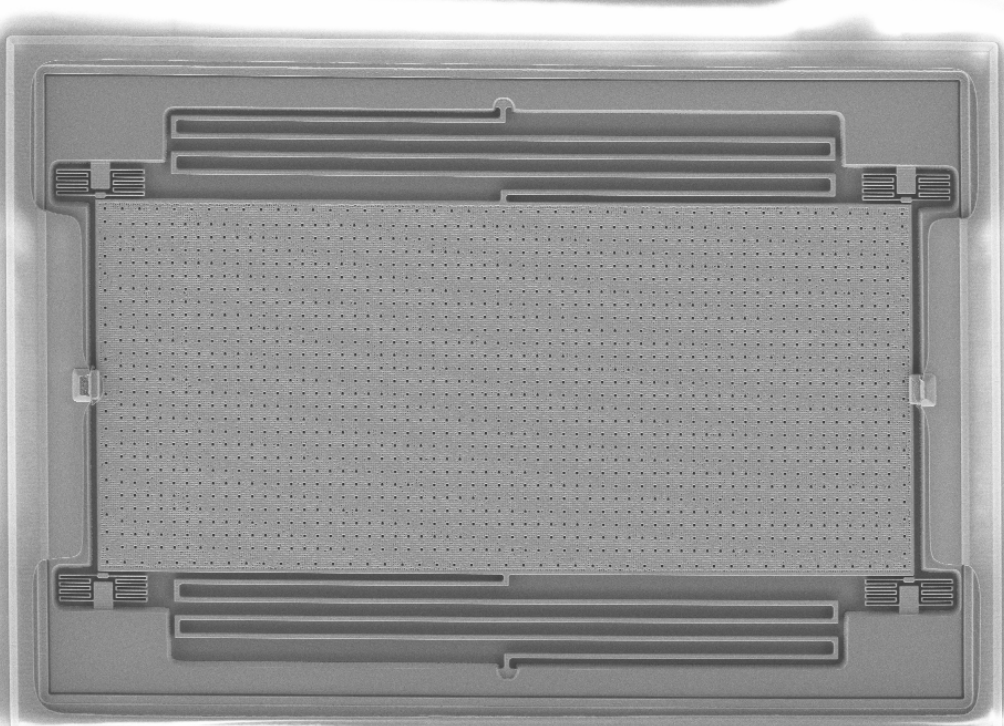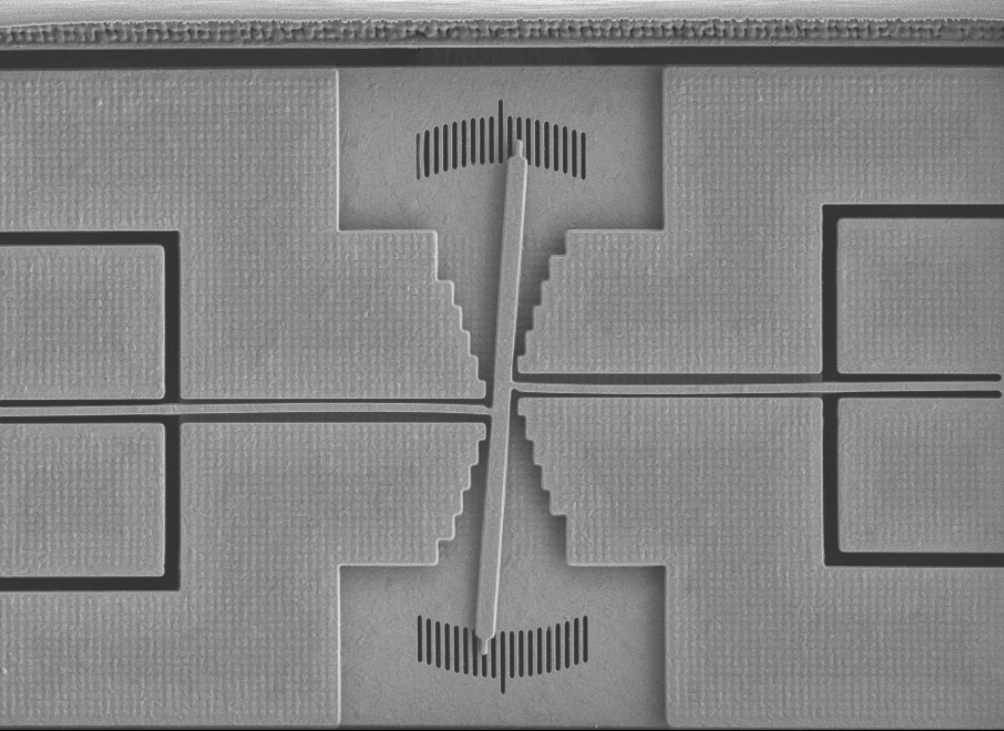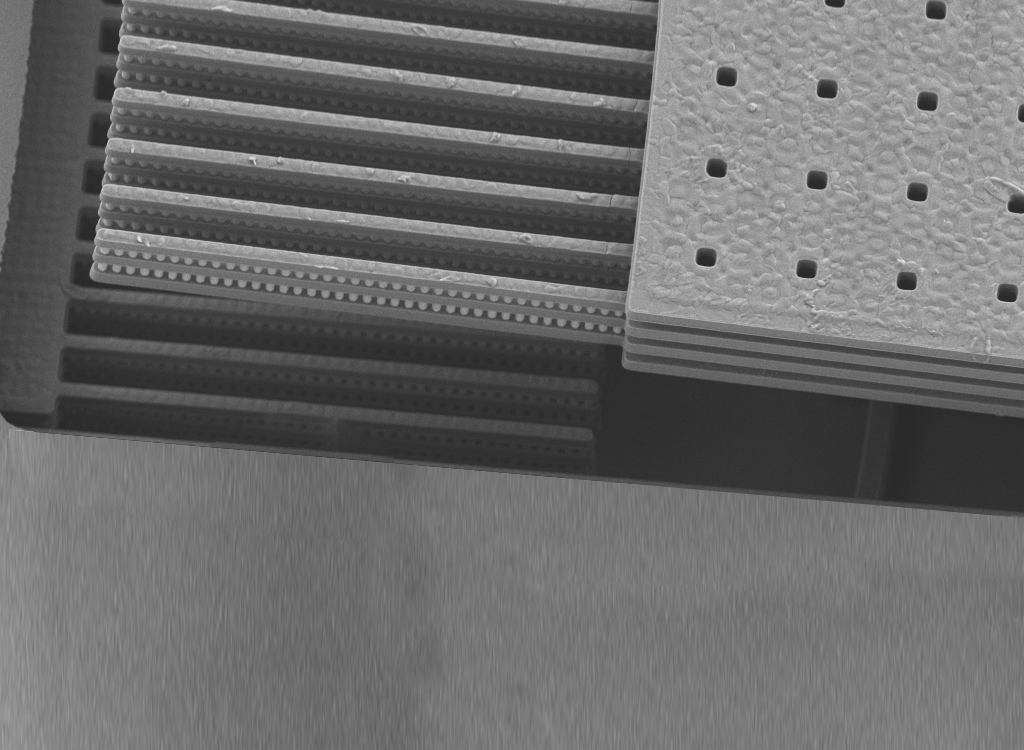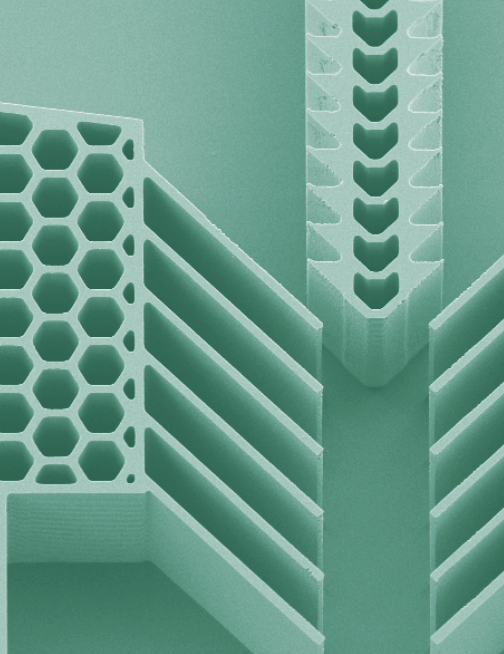
Different technologies for
different scales & applications
Most traditional MEMS are silicon-based, with active layers of 10 to 100 µm thickness, and die sizes within 1 mm to few cm side. An emerging alternative is based on CMOS technologies for maximum integration. Spryngs addresses both technologies, either with in-house processes or using MEMS foundries.
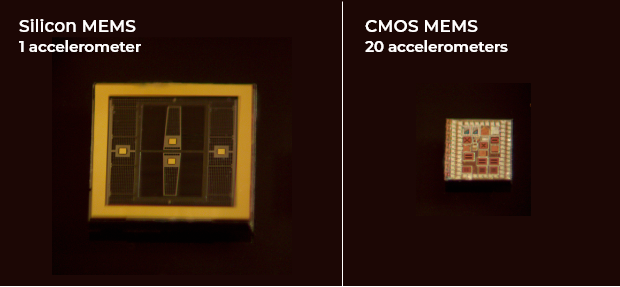
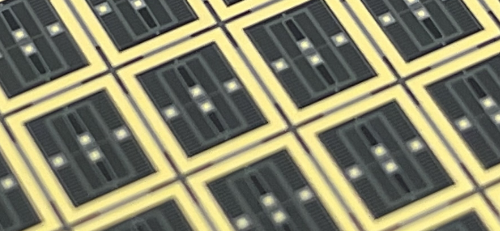
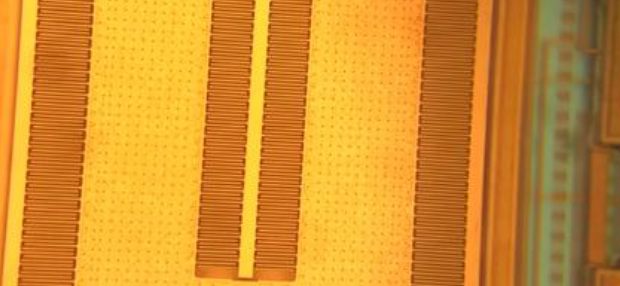
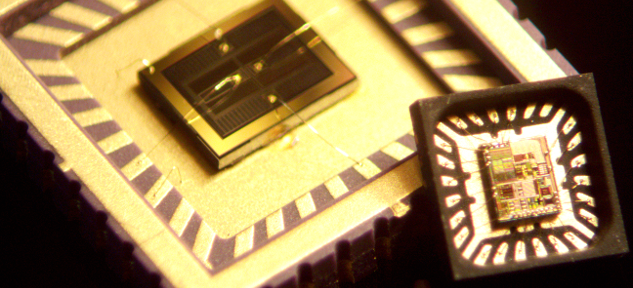
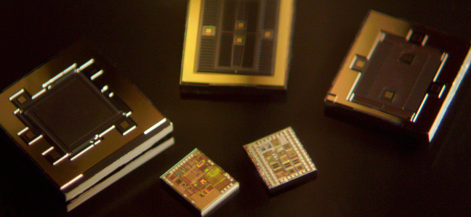
Silicon MEMS
A technology of choice for the vast majority of MEMS-based sensors produced today, yet with a lot of diverse implementations and process steps to match the requirements of the final application.
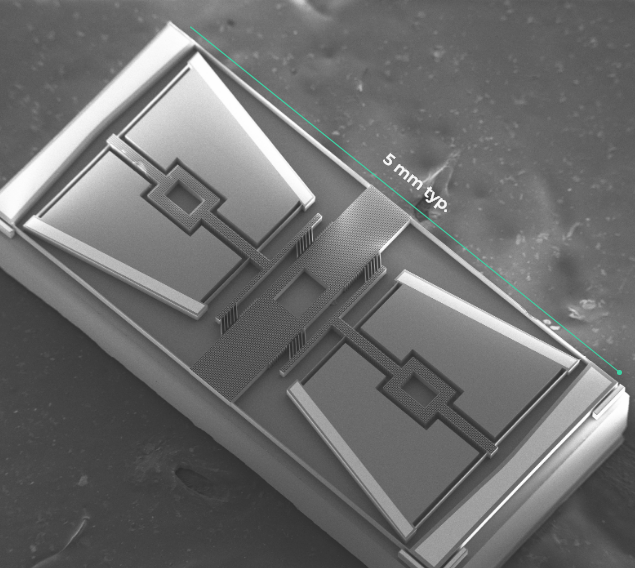
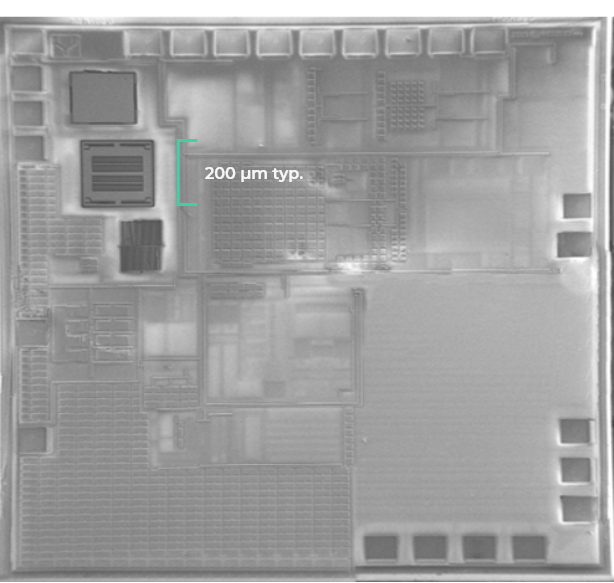
CMOS-MEMS
A more miniature technology is CMOS-MEMS, where mobile parts are made of the metallic layers of a CMOS process. An additional post-processing step is performed to remove the oxides, thus releasing the moving structures.
Benefiting from the more advanced CMOS processes, designs using this technology are an order of magnitude smaller than Silicon MEMS and more integrated since MEMS and readout electronics are built on the same substrate.
